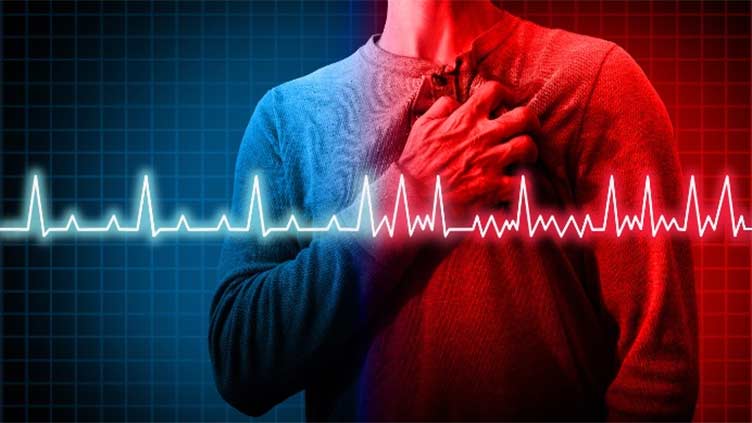Why women are less likely to survive sudden cardiac arrest than men

Why women are less likely to survive sudden cardiac arrest than men
ISLAMABAD, (Online) - Women have a lower survival rate from sudden cardiac arrest, partly because bystanders are slower to provide resuscitation to women than men, according to a study published this week.
The researchers also found that primary care visits substantially rose in the weeks before a sudden cardiac arrest. The scientists believe this shows there are more warning signs of impending cardiac arrest than previously thought.
The researchers said this information could help medical professionals identify people at imminent risk of cardiac arrest to help prevent it.
“There could be signs and symptoms of worsening coronary artery disease before a cardiac arrest, which could result in more primary care visits,” said Dr. Salvatore Savona, an electrophysiologist at The Ohio State University Wexner Medical Center.
“Cardiac arrest is typically caused by ventricular arrhythmia or an irregular rhythm from the bottom chamber of the heart,” he told Healthline.
“As noted, ventricular fibrillation (VF) is one of these rhythms. A common underlying cause for developing VF is coronary artery disease.”
Details from the cardiac arrest study
The researchers pooled data from 15 members of the European Society of Cardiology (ESCAPE-NET) to create a database of more than 100,000 people who have experienced sudden cardiac arrest victims as well as a biobank with 10,000 DNA samples.
Dr. Hanno Tan, ESCAPE-NET project leader and cardiologist at the University of Amsterdam Medical Centre AMC in the Netherlands, said he hopes this information can provide information for researchers to use when studying cardiac arrest.
“Sudden cardiac arrest is a pressing public health problem that has so far been extremely hard to solve, largely because of the lack of difficulty to obtain detailed clinical data and biological samples,” Tan said in a press statement.
“ESCAPE-NET has made important steps by establishing a database, biobank, and knowledge base that may be used in future studies to solve this problem. This should accelerate knowledge gathering on this condition and ultimately reduce the societal burden of sudden cardiac arrest,” he added.
What is sudden cardiac arrest?
Sudden cardiac arrest is an arrhythmia in the heart’s rhythm that causes it to stop beating immediately, according to UCLA Health.
“The most common underlying cause for a cardiac arrest is coronary artery disease,” Savona said. “The classic typical symptoms include chest pain or chest pressure that becomes worse with exertion and improves with rest. It typically lasts for a few minutes at least.”
“However, there are atypical symptoms as well, such as nausea, fatigue, or shortness of breath,” added Savona. “Men usually present with typical symptoms. However, women may present with more atypical symptoms, which could result in a delay in identifying the underlying cause of symptoms.”
The researchers for the new study point out that death usually occurs within 10 to 20 minutes if blood flow isn’t restored.
Cardiac arrest risk factors for women
Sudden cardiac arrest is not a heart attack, but having a heart attack or heart disease increases your risk of having a sudden cardiac arrest.
Risk factors for women include having one or more of the following conditions:
• Coronary heart disease
• Depression
• Dilated cardiomyopathy
• Family history of sudden cardiac arrest or some abnormal heart rhythms
• Hypertrophic cardiomyopathy
• Previous heart attack
If someone has a sudden cardiac arrest, resuscitation must happen immediately. Cardiopulmonary resuscitation (CPR), when started within moments, can triple the chances of survival.
However, many people still see heart disease, heart attacks, and sudden cardiac arrests as a man’s disease, even though 40 percent of cardiac arrests occur in women.


